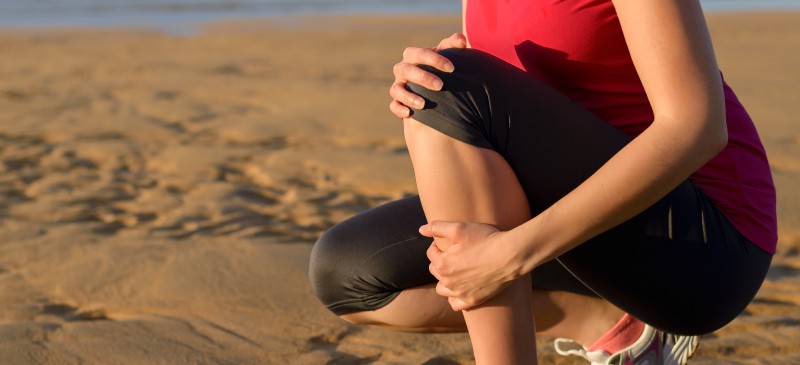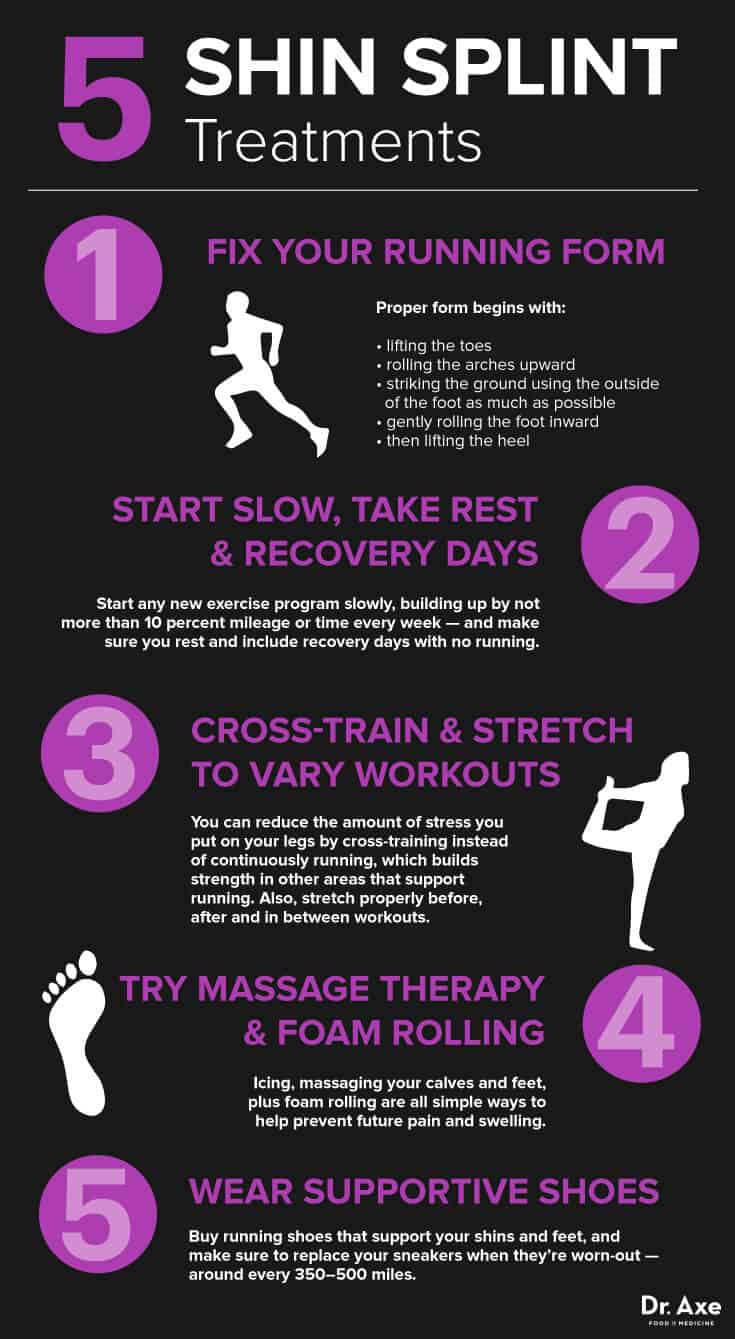This Dr. Axe content is medically reviewed or fact checked to ensure factually accurate information.
With strict editorial sourcing guidelines, we only link to academic research institutions, reputable media sites and, when research is available, medically peer-reviewed studies. Note that the numbers in parentheses (1, 2, etc.) are clickable links to these studies.
The information in our articles is NOT intended to replace a one-on-one relationship with a qualified health care professional and is not intended as medical advice.
This article is based on scientific evidence, written by experts and fact checked by our trained editorial staff. Note that the numbers in parentheses (1, 2, etc.) are clickable links to medically peer-reviewed studies.
Our team includes licensed nutritionists and dietitians, certified health education specialists, as well as certified strength and conditioning specialists, personal trainers and corrective exercise specialists. Our team aims to be not only thorough with its research, but also objective and unbiased.
The information in our articles is NOT intended to replace a one-on-one relationship with a qualified health care professional and is not intended as medical advice.
How to Get Rid of Shin Splints Fast
March 5, 2018

Shin splints are a reminder that it’s important to exercise in a truly healthy and moderate way rather than beginning too fast, expecting too much of yourself or failing to get adequate recovery. One of the most common running injuries, shin splints are caused over time by a series of dysfunctional musculoskeletal movements. (1)
According to the American Academy of Orthopaedic Surgeons (AAOS), shin splints usually occur after vigorous physical activity, usually running, but also if you are just starting a fitness program. (2) Besides ankle sprains, shin splints are one of the most common lower leg injuries.
Anyone who has ever dealt with shin splints will tell you that they can hurt a lot! Shin splits can start out as dull muscle aches in the shins and then slowly progress into mild “shooting pains” and increased swelling. Usually, they happen in only one leg, the dominant one, although some people can experience them in both at the same time. Sometimes they can become so bad that it’s hard to even stand or walk without experiencing throbbing.
Common among runners, dancers and athletes who overwork their bodies, shin splints refer to the feeling of pain along the front of the shinbone, which is actually the tibia. (3) The tibia is the large bone running in the front of your lower leg that connects to other other muscles, tendons and bone tissue to help you move around.
Let’s dive into shin splints symptoms, causes and then treatment (both conventional and unconventional) options.
Symptoms of Shin Splints
Common symptoms of shin splints, the common name for a condition called medial tibial stress syndrome, include:
- not being able to walk or run without pain
- pain and tenderness in the lower half of the legs (especially the lower third of the shins, in the inside of the calf near the Achilles tendon)
- bone and joint pains that get worse with exercise
- small bumps or bruising on the shins
- pain when standing for long periods of time
Shin pain can come on suddenly when you begin a new exercise routine (like running), or it might build over time.
Overall, there are four muscles involved in the development of shin splints that lead to pain and tenderness: the tibialis anterior, tibialis posterior, gastrocnemius and soleus. These are the muscles in the calf and heel that allow the heel to lift and the arches of the feet to roll upward when you walk or run.
Symptoms develop when these muscles stop working as they normally should, usually because they experience conflicting and simultaneous demands due to poor running form. (4) In other words, there’s trouble with how your muscles and bones work together in the shins and feet.
Three muscle groups are typically involved with shin splints. The medial group — running down the inside (medial) side of your shin — includes the posterior tibialis, flexor hallucis and flexor digitorum muscles. The front (anterior) part of your lower leg consists of the anterior tibialis, extensor hallucis and extensor digitorum muscles. The third group involves the outside (lateral) side of the lower leg. It involves the peroneus longus, peroneus brevis and peroneus tertius muscles.
Shin splint pain usually occurs on the lower inside one-third part of the leg. It can involve posterior medialis tenderness, or it may consist of sharp pain alongside the tibia bone or even isolated areas on the bone. If shin splint pain is experienced on the front side of the upper one-third leg, it often involves muscle tenderness in the anterior tibialis. If pain occurs on the outside of the lower leg, it usually means the peroneus group on the lower one-third of the leg. (5)
You might choose to self-diagnose your shin splints or visit a doctor if the situation becomes serious enough. Shin splints can be detected through X-rays, a physical exam, and talking to your doctor or physical therapist about past injuries and your current workout routine.
Sometimes, acute compartment syndrome is mistaken for shin splints, which is far more common. (6) Compartment syndrome is when an enclosed part of the body, such as the lower leg, stops receiving blood flow and becomes overly inflamed and stiff. It’s far more serious than shin splints. Pain in the lower leg could also be a stress fracture, which is an incomplete crack in the bone, but that too is much rarer than shin splints.
Causes of Shin Pain
The most common trigger for shin pain is running. Some of the instances that lead to shin splints include:
- running with bad form (fallen arches, overpronation or supination, for example)
- not giving yourself enough recovery time between runs
- running on hard surfaces (such as pavements or a track)
- running uphill or downhill, which puts pressure on the shins
- running on unstable terrain (like rocky hills)
- beginning a workout routine too aggressively, without slowly progressing
- running before stretching or warming up, or not properly stretching afterward
- wearing new or worn-out sneakers that don’t support the feet or that you’re not used to yet
If you’re an avid runner, the last thing you probably want to hear is that running is the exact cause of your pain, and ceasing to do so for a while, plus changing the way you run, is the fastest route to recovery. Indeed, running tips for beginners and advanced runners both center around proper recognition of pain vs. injury and muscle recovery.
So why do some runners deal with shin splints, while others don’t? One of the reasons is a phenomonen called muscle memory. Essentially, your muscles, joints and bones can remember an injury from your past, making you more susceptible to future injuries, wear and tear, or pain. This is even true if you feel like you’ve let enough time go by and have fully healed.
Old injuries in your calf can leave behind scar tissue that heals incorrectly. Imbalances in the body caused by repetitive motions, bad running form for many years, and not stretching your IT bands, glutes, calves and heels enough can cause damage. Injuries done to tissue in the past can make you more vulnerable to suffering from shin splints than someone who never dealt with these issues.
Even if you notice symptoms appear within a very short period of beginning exercising, chances are damage to your lower legs has been forming for some time. Old injuries can leave scar tissue on your lower legs and set the scene for future pain.
A major cause of shin splints is not giving your body enough time to rest. We’ve all heard that we need “recovery days” and ample time between workouts to repair broken-down muscle tissue, but some people still choose to push themselves too far for one reason or another.
The trouble is that overtraining can lead to musculoskeletal problems that can become very painful and take a long time to heal. Repetitive stress placed on the connective tissue between the muscles and bones in the shins is the primary cause for shin pain.
Resting between runs is important for lowering symptoms of shin splints, but in some cases rest alone won’t do the trick. If the underlying problem is bad running form or not wearing supportive enough shoes, the core problem isn’t addressed when you rest. This is why shin splint symptoms can go away temporarily with rest but reappear quickly for many people.
How to Get Rid of Shin Splints Fast in 5 Steps
Once you rule out other causes for your shin pain, you can take some simple steps to reduce shin splints from reoccurring.
Unfortunately, most experts believe that it’s important to stop running altogether for a period of time to help the muscle and bone heal. Once you start making changes, a reduction in pain might take three to six months, depending on how severe the damage is and how much you rest.
If your pain is bad enough, taking over-the-counter painkillers along with icing the shins can help reduce pain while you heal. Conventional treatment usually consists of taking acetaminophen (Tylenol®) or a nonsteroidal anti-inflammatory drug (NSAID), such as ibuprofen or even Voltaren® Gel. Also, icing the affected area by applying ice packs for 15 minutes a few times a day can help lower swelling.
Although these shin splint self-care steps won’t help solve the underlying issues, these are the types of conservative treatment options usually prescribed. And some of these common treatments have also helped many other lower extremity musculoskeletal conditions. (1)
Here’s your step-by-step shin splints natural treatment plan:
1. Fix Your Running Form
Proper running form luckily can be learned if it doesn’t come naturally to you. Some of the best ways to change your form are to meet with a physical therapist, who can show you how to properly roll your feet when running, or watch a video explaining proper form at home so you can practice.
Proper form involves beginning with lifting the toes, rolling the arches upward (called inversion), striking the ground using the outside of the foot as much as possible, gently rolling the foot inward (called eversion) and then lifting the heel. You ideally want your heel to lift evenly without pushing too much on one side.
Some of the ways people incorrectly run with poor form include:
- not rolling arches upward/having flat feet, which means stepping causes your arches to collapse
- having the heel strike the ground too abruptly without rolling it evenly
- overpronation of the foot, which means rolling inward and putting too much stress on the toes
- not lifting the toes, which can cause someone to trip often
One of the biggest things to correct is bad heel form. Normally, the foot/heel should make contact with the ground from the outside. Overpronation means the foot rolls inward too much, which results in the ankle not being able to stabilize the foot and absorb shock properly. This form can also cause the toes to do most of the pushing during lift-off, which puts added stress and pain on the toes.
2. Start Slow, Take Rest and Recovery Days
Muscle recovery is crucial, for running when your muscles are already worn-out can cause too much scar tissue to form and muscle tissue adhesions to develop where they shouldn’t. Start any new exercise program slowly, building up by not more than 10 percent mileage or time every week. After all, it’s easier to help prevent shin splints than to treat them once they’re already formed!
When you have a minor tear or injury, the muscles try to resolve the situation by overcompensating and forming extra attachment sites. Newly formed abnormal adhesions put added pressure on the shin bone and strain on the lower part of the legs. Opposing motions can take place since muscle tissue and bones now interact in ways they shouldn’t.
You want to prevent overgrowth of scar tissue by allowing your muscle tears to heal properly, so make sure you get enough rest between workouts. You can still exercise in a way that doesn’t put stress on the shins, such as swimming or possibly cycling.
You might notice that your shin pain goes away when you rest enough and take some time off from running. However, this isn’t always the case — recurrence of shin splints symptoms is common when someone’s form isn’t addressed.

3. Cross-Train and Stretch to Vary Your Workouts
To beat shin splints, you can reduce the amount of stress you put on your legs by cross-training, meaning doing multiple types of exercises each week instead of continuously running. This helps build strength in other areas that support you during running and take pressure of your shin and heel.
For example, exercise to strengthen your core, or try strength training several times per week to build muscle in your upper and lower body (including glutes and thighs) without straining your shins. Swimming laps, yoga, TRX, biking or simply walking are also good ways to break up your week.
Before, after and in between workouts, also make sure to properly stretch. To stretch and strengthen your calf muscles as part of your shin splint treatment, try toe raises, which are done by lifting your toes, then slowly lowering your heels to the floor over and over.
You can gently stretch your Achilles heel by kneeling on the floor with your legs and feet together and toes pointed directly back. Gently sit back onto your calves and heels for at least 12–15 seconds, which stretches the muscles of your shin. Check out other calf exercises and stretches.
4. Try Massage Therapy and Foam Rolling
Icing, massaging your calves and feet, plus foam rolling, are all simple ways to help prevent future pain and swelling. These are beneficial for more than just shin pains, too — they treat pain throughout the legs. When scar tissue is formed to heal muscle injuries (broken-down muscle fibers that result from exercise), the adhesions between tissues can become stiff and tightly attached if the muscles aren’t moved around.
Safely mobilizing muscles helps break up adhesions. Some massage therapists and physical therapists recommend starting by massaging the calves.
Calf therapy using a foam roller can be done by placing the foam roller on the floor, positioning your body on top so the roller is under your calves, and moving back and forth. You can practice the same on the back or sides of the calves, too. It might feel painful or tight, but this is a good sign and prevents future aches.
Roll the area for 30 to 60 seconds, then take breaks for an equal time period. Repeat this for five to 10 minutes every day, ideally.
5. Wear Supportive Shoes
Some sneakers support your shins and feet when exercising better than others. Choose the right shoes for your feet by talking to a professional when you purchase shoes so he or she can properly measure you and look at your arches. An important part of shin splint treatment is wearing footwear that is made for your specific exercise or sport, along with replacing your sneakers once they’re worn-out, which for runners is usually every 350 to 500 miles. (6)
You can also purchase supportive insoles to place inside your sneakers if you’re prone to flat feet. There’s some evidence that the use of shock-absorbing insoles can help stop shin split pain, which has been tested on military personnel. (7) These can even be custom-made to correctly fit your feet and resolve poor form.
Compression socks and compression wraps are other options that help stop inflammation and swelling around damaged bone or muscles.









